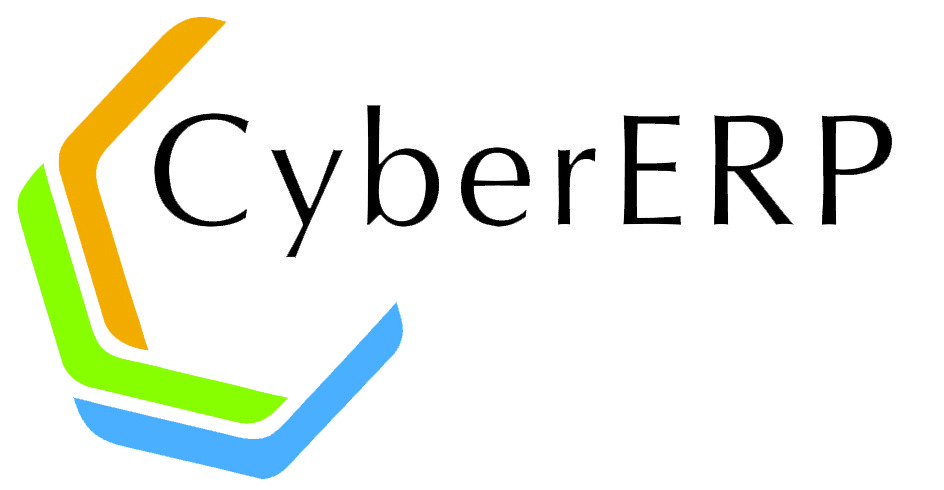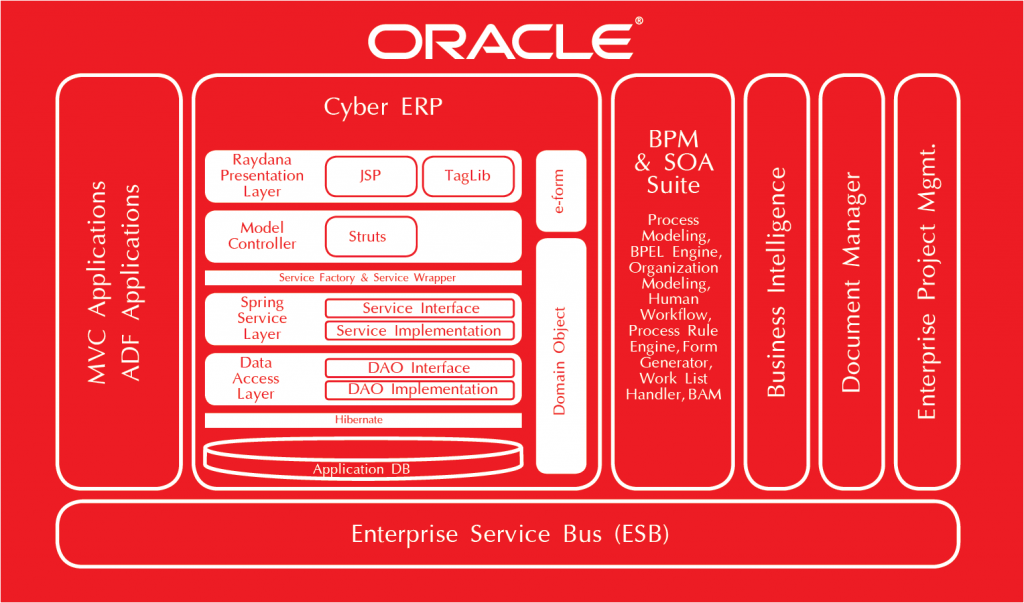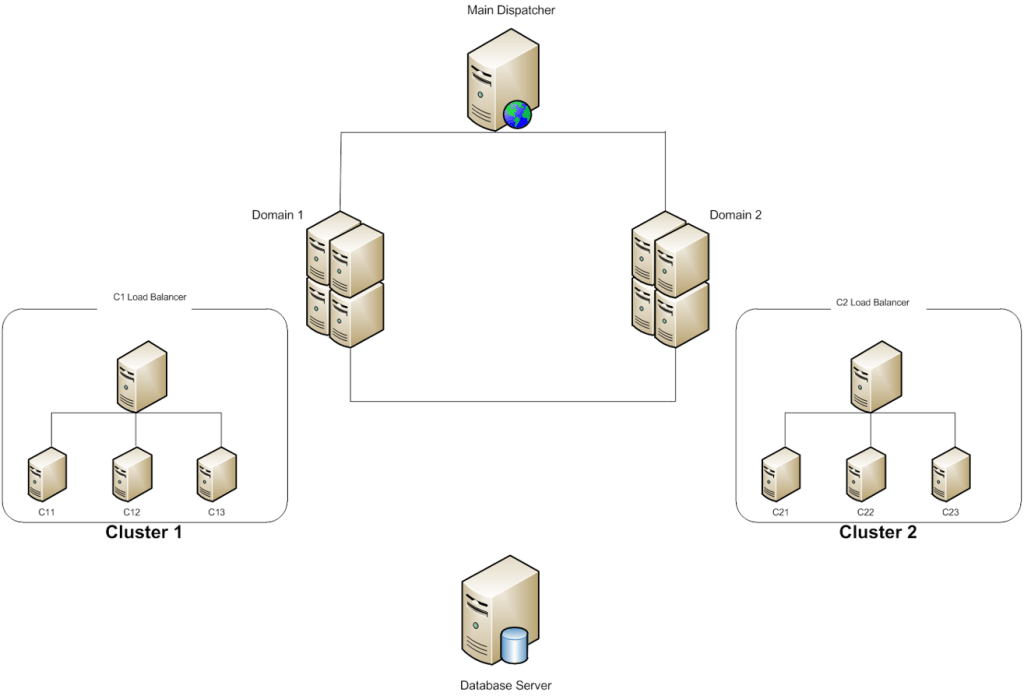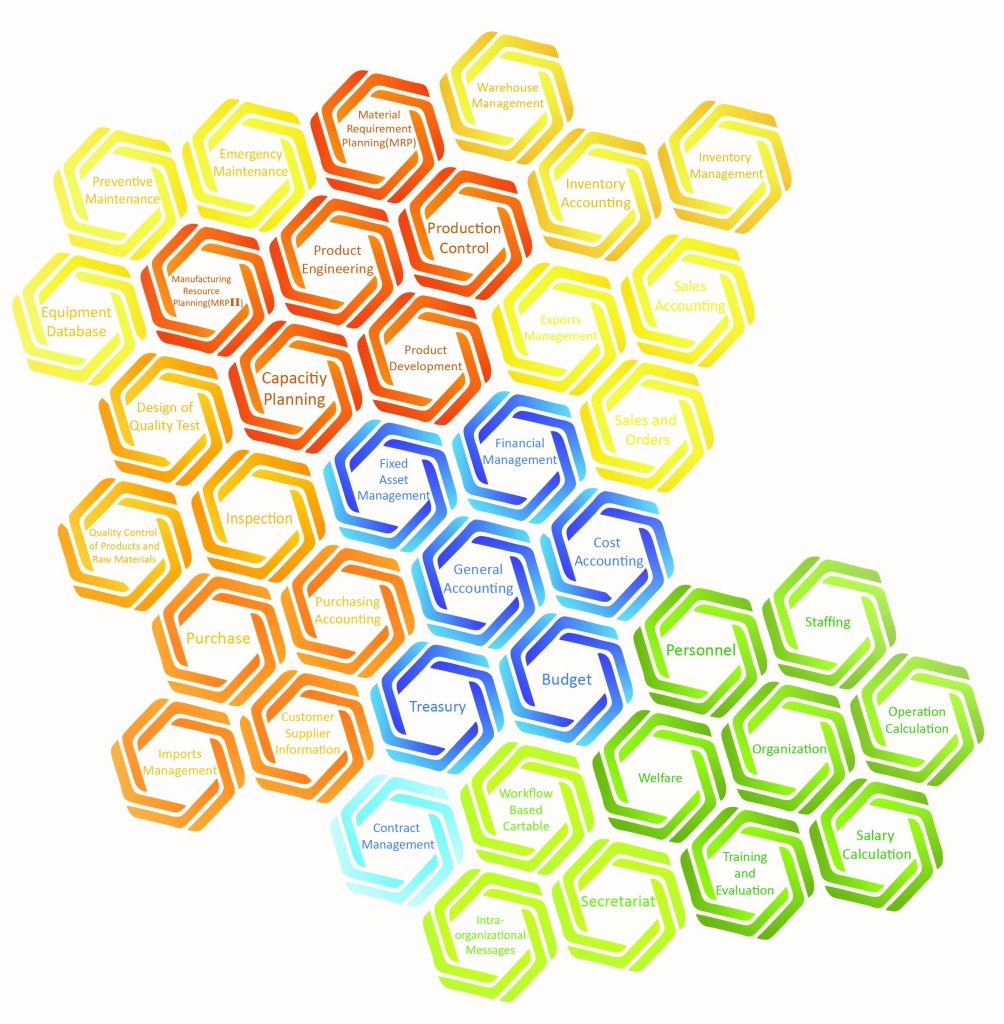Cyber ERP system carries out the main functions of an organization including financial management, Human resources management, purchase and procurement, inventory, production and planning, sales and customers’ service in a single unified information infrastructure thanks to its integrity; in addition, it provides the capability of timely processing and analyzing in decision-making procedures in the organization by creating compatibility and eliminating information discrepancies; this leads to the managers’ more effective and efficient planning and control in the organization.
CyberERP solution

Features
Using Oracle centralized database, Cyber ERP provides an integrated vivid image of the organization. With this image, all organization resources, such as cash, prefabricated and raw materials, production capacity, or its obligations like orders and inquires (from confirmation step to final delivery) and salaries could be analyzed and followed up every moment. While using the unified integrated database to keep the record of all the information related to the organization functions (i.e. financial affairs, purchase, sales, production, inventory, salaries, and etc.), not only is all the required information accessible for the managers, but also there is no error in the information system of the organization resulted from a human mistake or existence of a repetitive item.
When the access to the valuable information of the organization increases, managers could have a vivid comprehensive image of the organization; besides, it would be possible to define the common performance indicators and their measurements for the different sections of the organization. The integrity of the information in the organization can also result in a centralized management of various costs and consequently decrease the costs of the organization considerably. Moreover, interaction with the customers and service delivery occur significantly at higher pace.
Eliminating paper work and bureaucracy and replacing it with automatic and electronic routing in the organization has a noticeable impact on the speed of the performance. Process movement means as one person is done with his share of work, the rest of the work automatically and systematically moves to the next person in the process (For example, from the inventory to the finance). This is how time-wasting is prevented, and no problem occurs due to losing or forgetting the work. A work process based on sequential order guarantees the accurate function (especially for the stages which have high human-mistake risk). In fact, each part of the process is considered as a check point for the preceding part. Thus, it is confirmed that no part is missing during the process.
Furthermore, the automatic function of the system processes, such as an automatic issue of sales invoices or purchase orders based on the defined routines in an integrated system reduces any malfunction regarding manual working and also the relevant predicted errors. Being process-centered increases information clearance in any organization; this means that the management can quickly analyze the condition of any item (from physical or information aspect) in any part of the organization. This advantage helps the key people of the organization analyze the critical processes in each part of the organization, recognize and solve the problems. It is also possible to supervise the performance and output of the different sections of the organization. As all the information related to the work processes and routines is recorded and saved in the database, it is possible to monitor and analyze who has done an event, where and when the event has occurred.
Cyber ERP is completely designed based on web, so managers, employees, and customers could have access to the information anywhere anytime. As a result, there is no time or geographical limitation. This means that if the organization has offices or branches in different geographical locations, all those offices could be connected to an on-line integrated system. This is a huge advantage for the managers who spend a lot of their time on business trips to visit new customers or evaluate new suppliers.
Moreover, all the personnel can get connected to Self Service section of the system via their tablets or mobile phones and insert or follow up their requests; this leads to higher personnel satisfaction, less work load, and higher follow-up speed.
Business intelligence system (BI) converts the on-line information dashboards of the organization to a device to recognize issues, procedures, and opportunities by receiving reports and analyzing the information of the different sections. This device offers easy rapid access to information regarding various subjects. Thanks to its powerful technical-analytical tools, this system can place large scattered raw inputs in different information categories; useful and practical information vital for managers’ decision making.
Technical Specifications
5-layer architecture
To increase the input transaction speed and also the software development speed, five-layer architecture has been used. Considering the use of MVC model (using Spring/Struts, Hibernate, DB, JSP, JavaScript, and Ajax), database layer could be favorably designed independent from the other four layers. Therefore, according to the customer’s requirement, various databases (Postgre SQL, MS-SQL, MySQL, and Oracle) could be used.
Web-based
Cyber ERP product of Raydana engineering Co. is completely based on web and is produced by J2EE technology. In order to link display and control layers to database and implement the software work logic, SOA architecture has been used, so users are able to get connected to the system via web or internet connections whenever and wherever they can and do their activities by using their username and password.
Connection and integrity to the systems of other organizations via web service is also possible in the similar way.
Subsystems
Cyber ERP solutions cover all the management, operational, and logistic processes of the organization completely; they include management, finance, production and planning, contracts, purchase and imports, sales and exports, inventory and stock, personnel and human resources, quality control, research and development, repair and maintenance, administrative correspondence, and etc.







